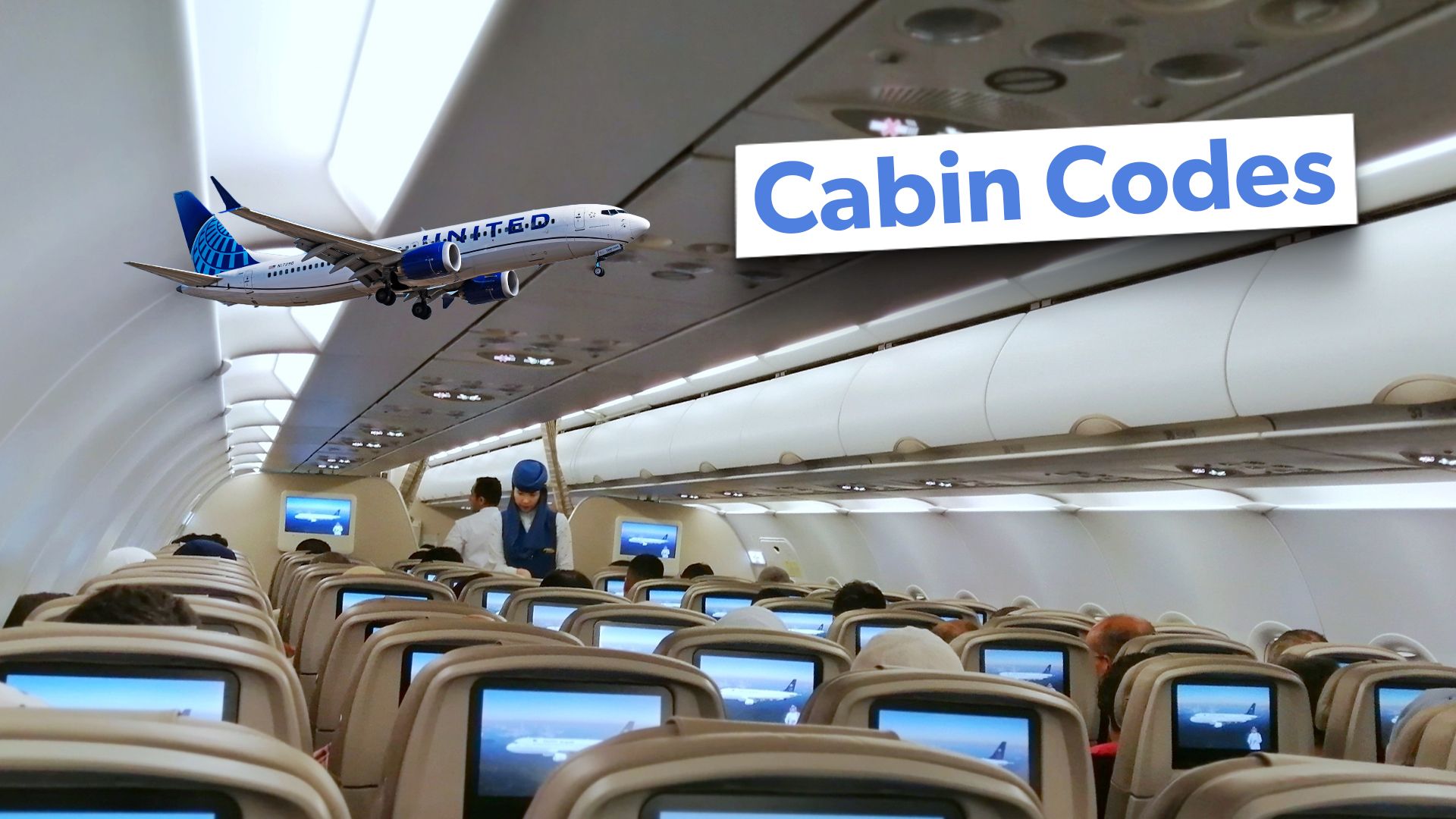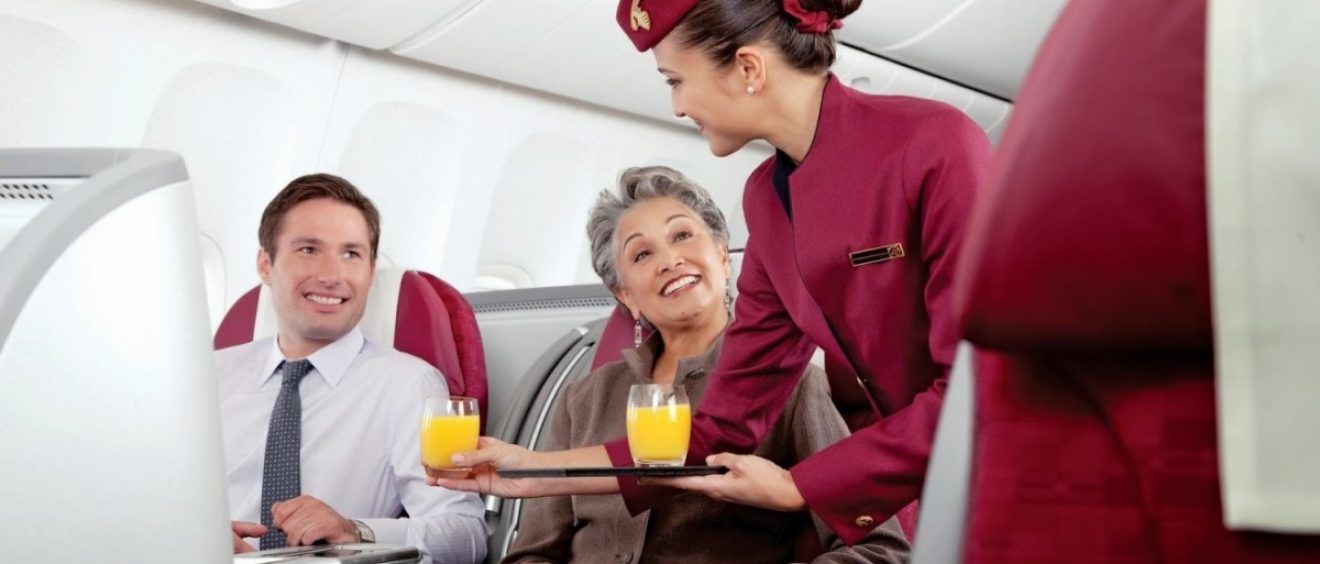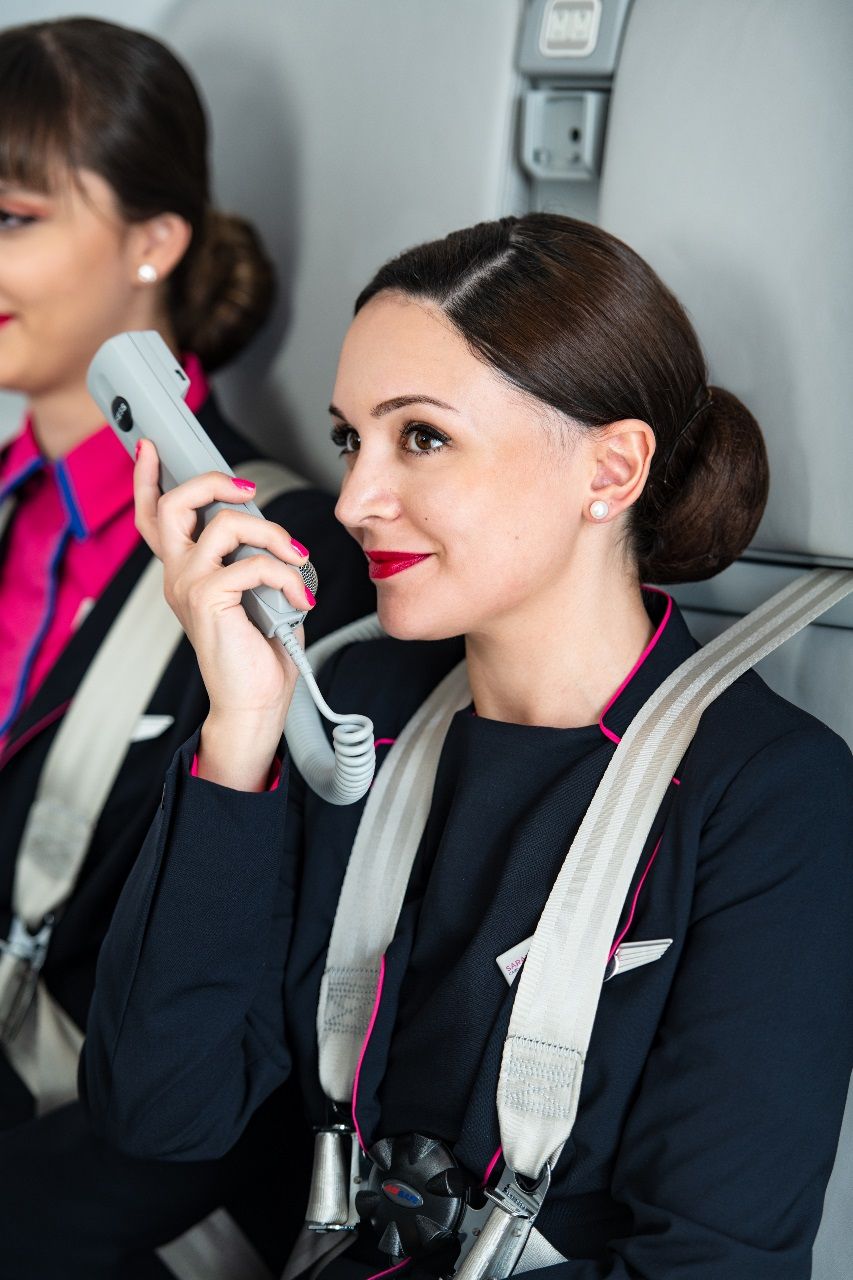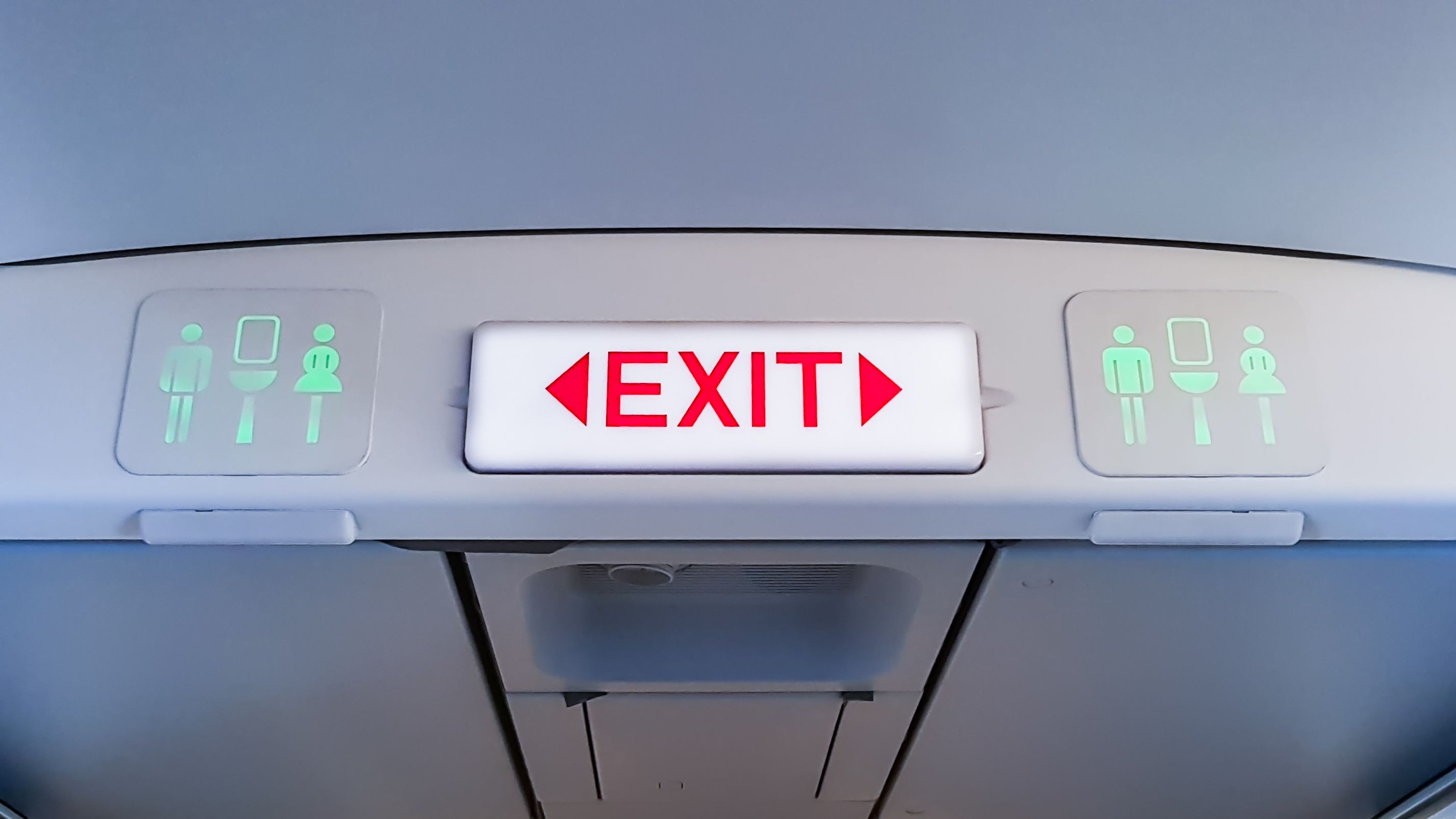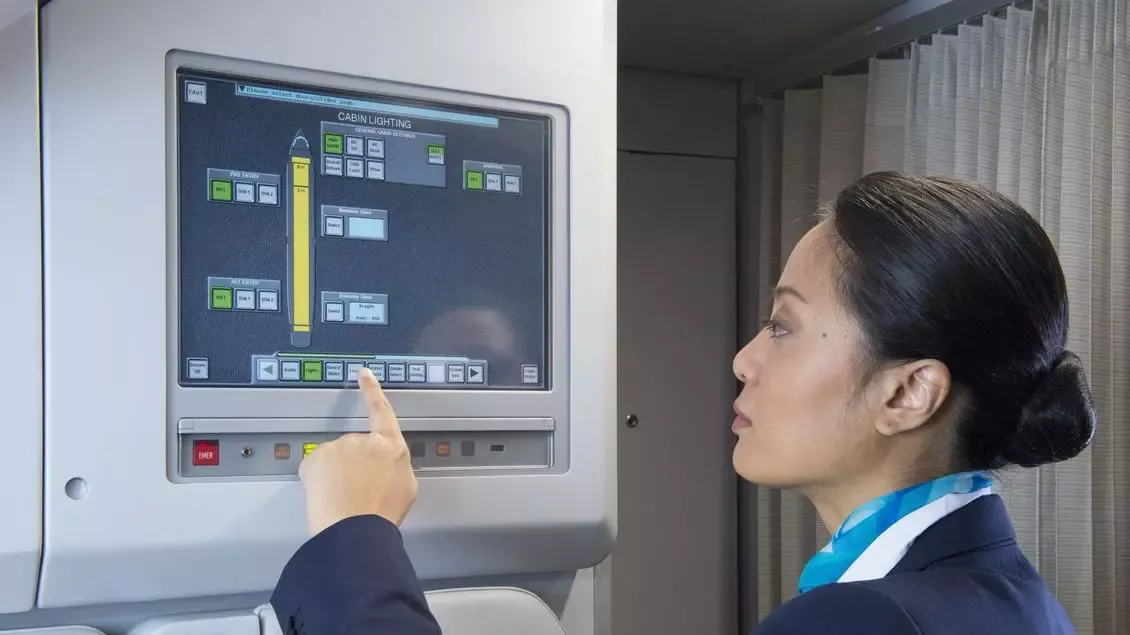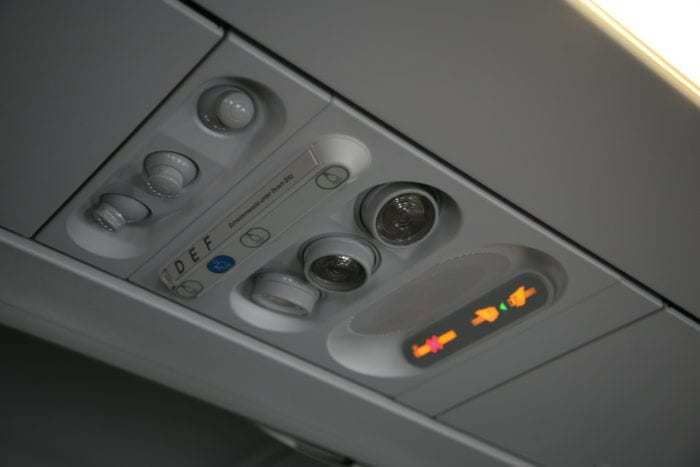When you travel by plane, there are lots of different noises, chimes, flashing lights, and stimuli in the cabin. This arouses curiosity in some passengers: What does it all mean? Some passengers get concerned and think it might be something serious. Here, we will take a look at what some of these mean, and next time you fly, you’ll see how it works.
The chimes and lights are basically our communication system onboard, which is essential, especially on larger aircraft where visual cues by cabin crew cannot be seen.
So, when you hear those chimes, there is mostly nothing to be concerned about. We will also look at some other sounds and communications used onboard. It is important to note that although these will mostly be the same, some aircraft may be slightly different and some airlines may have different procedures in place.
Photo: Qatar Airways
A look at the communications system
Firstly, we have a cabin communication system on all commercial aircraft. On Airbus aircraft, this is called CIDS – Cabin Intercommunication Data System.
At every cabin crew station with a single or double jumpseat, there is an interphone that allows for the cabin crew to communicate with each other, with the Senior Cabin Crew Member (SCCM), and with the flight crew and vice versa. This is also used for announcements.
Photo: Wizz Air (Abu Dhabi)
We also have a small strip of lights on the galley ceiling to notify us of different communications and where they are from.
This is called the Area Call Panel (ACP) on some aircraft types or the Master Call Light panel (MCL) on Boeing aircraft. On Airbus aircraft, there is also the Attendant Indication Panel (AIP) which is a tiny lit screen with messages pertaining to the communications system.
Photo: Chatree.I Shutterstock
Meanings of chimes and lights
Combined, the color of the light, whether it is steady or flashing, and the chime heard all mean different things. So, if a crew member is working in the galley or the cabin, they will understand what is being communicated by the chime and the light color.
For example, a high chime and blue steady light means that a passenger has pressed the call bell at their seat. If there is an AIP, the passenger seat number will show there.
A high chime and steady amber light means that a passenger has pressed the call bell in the lavatory. If the amber light is flashing and the chime is continuous, then smoke has been detected in the lavatory.
The steady pink or red light and one high/low chime mean that the cabin crew is contacting the crew in another galley/area. This can also be a conference call between all crew members, a call from the SCCM or the flight crew to a single station, or all crew.
Where it can be confusing is this is where some aircraft types differ, on the larger types such as the Airbus A330 and A340 and the Boeing 777, a call from the captain or purser to crew would mean a flashing pink/red light and one high/low chime.
Airbus 319/320 common use of ACP/AIP
|
Call |
Chime |
ACP |
AIP |
|
Pax from seat |
1 x hi |
Steady Blue |
‘Seat 27C’ |
|
Pax from lav |
1 x hi |
Steady Amber |
‘Lav Fwd/Aft’ |
|
Crew to crew |
1 x hi-lo |
Steady Pink |
‘Calling Station’ |
|
All crew |
1 x hi-lo |
Steady Pink |
‘Conference Call’ |
|
Captain to crew |
1 x hi-lo |
Steady Pink |
‘Call Capt’ |
The one which could get interesting is if the pink/red light is flashing and you hear three high/low chimes, this would mean an emergency call from the flight crew to the cabin crew. To be honest, it is very rarely heard or used. In 25 years of flying I have never heard it.
If there was a potential emergency situation, there are two phrases used by the flight crew over the PA system that only the cabin crew knows, which I cannot disclose for security reasons.
These are more likely to be used in an emergency situation and even then, it is only precautionary. It does not mean there will be an emergency.
Variations on types
There can also be variations on different aircraft types in the sound of a chime, for example, Some Boeing 747 had a very distinctive low-high, three times chime and some of the wide-bodied airbus have a high-high-low chime, that means the flight crew are contacting the SCCM.
Some Airbus 319 and 320 have a green light instead of the pink one. On the Boeing 787, a green light replaces the pink light. On the older Boeing 737s, there was also a white light and two red and white lights.
Other chimes
Of course, you will hear a chime when the seatbelt sign is switched on and off, but is also used as a method of communication between the flight crew and cabin crew. Some are commonly used by airlines, for example, just before take-off or when landing is imminent, there may be two chimes, where the seatbelt sign is recycled, to let the cabin crew know.
The same is often used when it is safe for the crew to leave their jumpseats after take off, but not for the passengers to leave their seats.
If there is turbulence, you will hear a single chime when the seatbelt goes on and then, later two or three chimes (depending on airline and procedure) to tell the cabin crew to secure the galley and cabin and return to their seats as soon as possible. Some signals are individual to flights and will be discussed in the pre-flight briefing.
At the end of the day, the chimes are mostly just communication between crew members in the cabin and the flight crew. But, you will probably notice, on hearing a chime, the cabin crew will automatically look up to the ceiling and the ACP.
They are nothing to be concerned about and more often than not, its usually the cabin crew checking if there are any spare meals in business class or the flight crew asking for a coffee.
Note: Although most chimes/lights have the same meaning on most commercial airlines, on some aircraft types, it may be slightly different or the airline’s procedures might be different.
